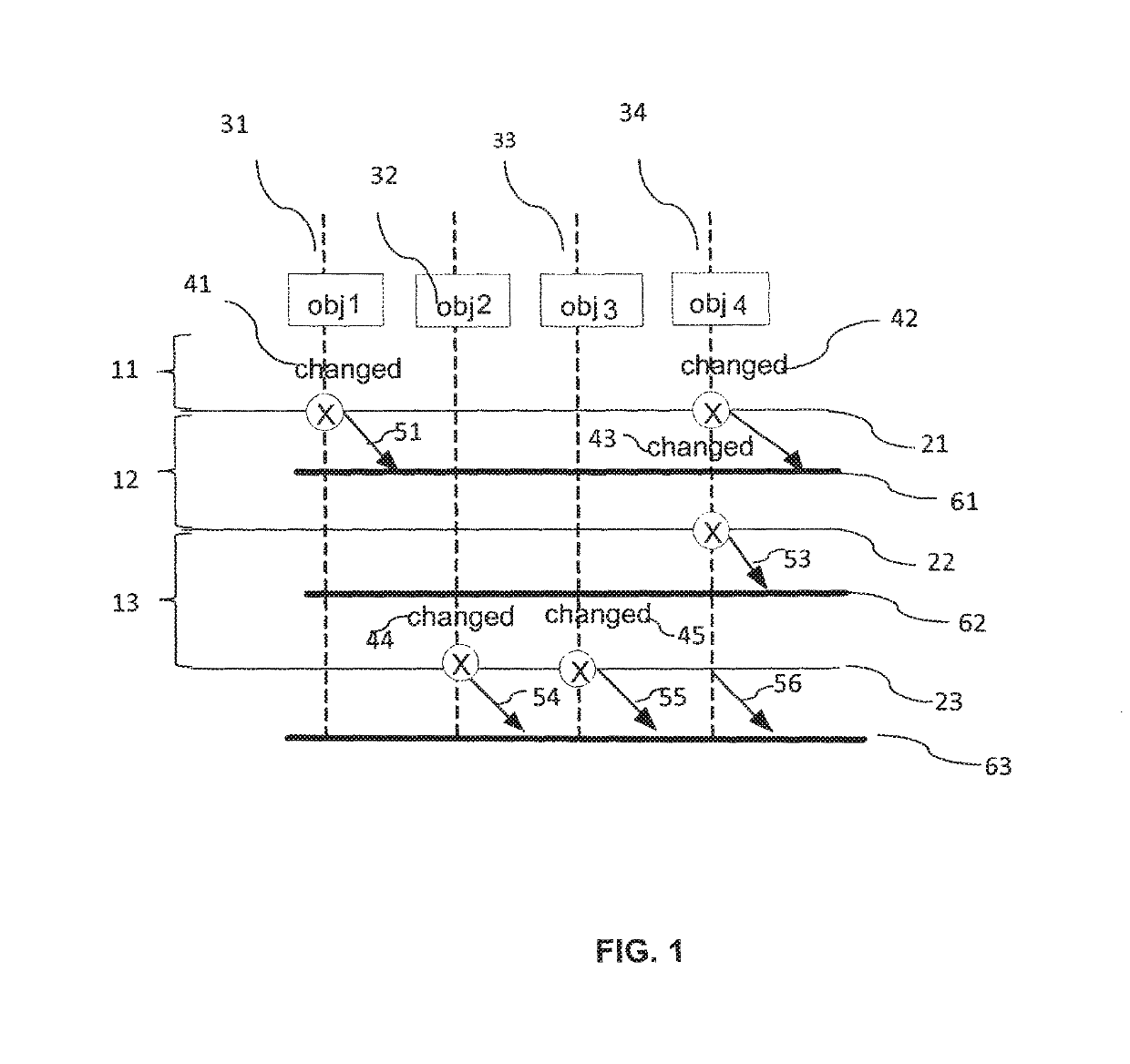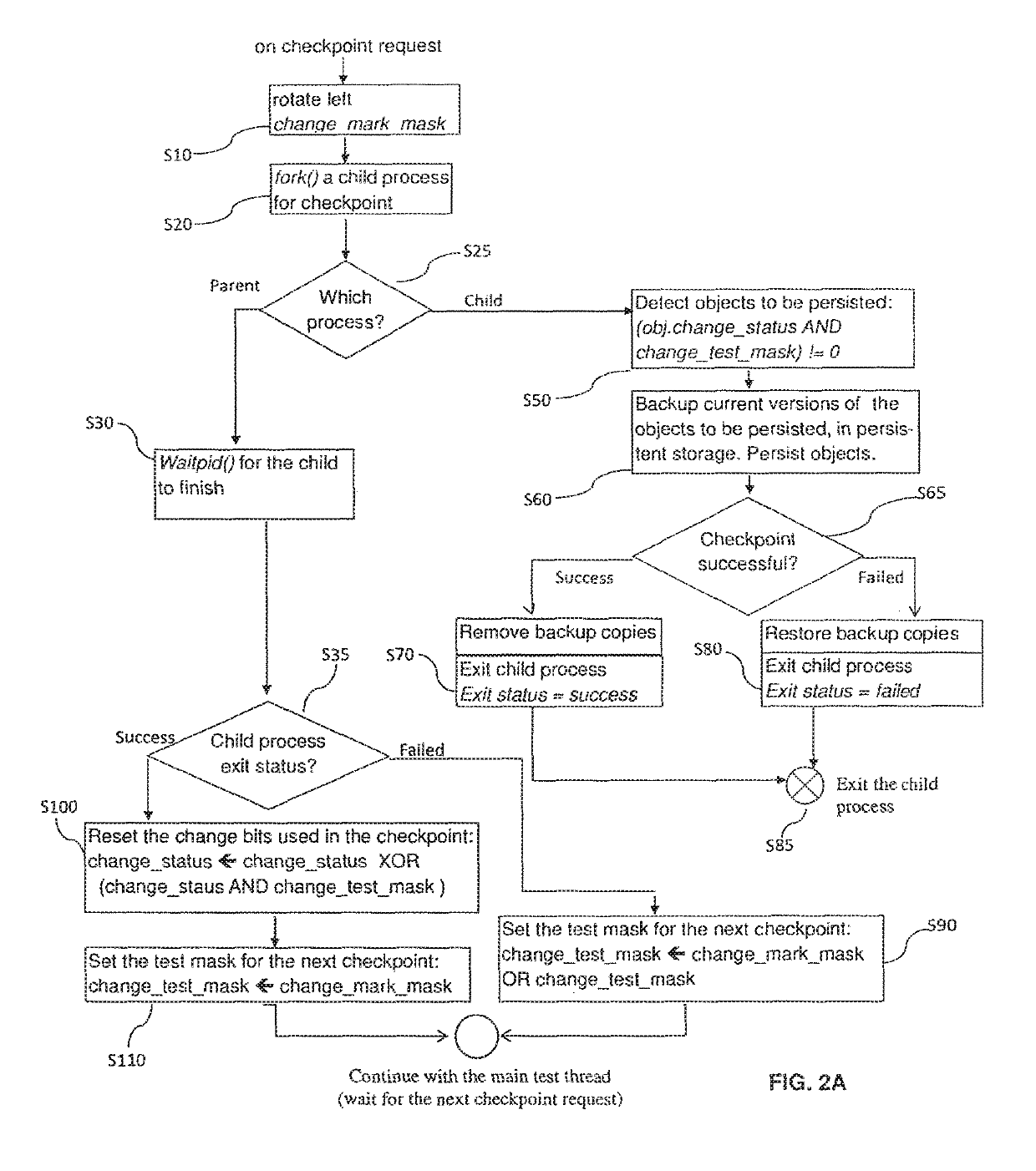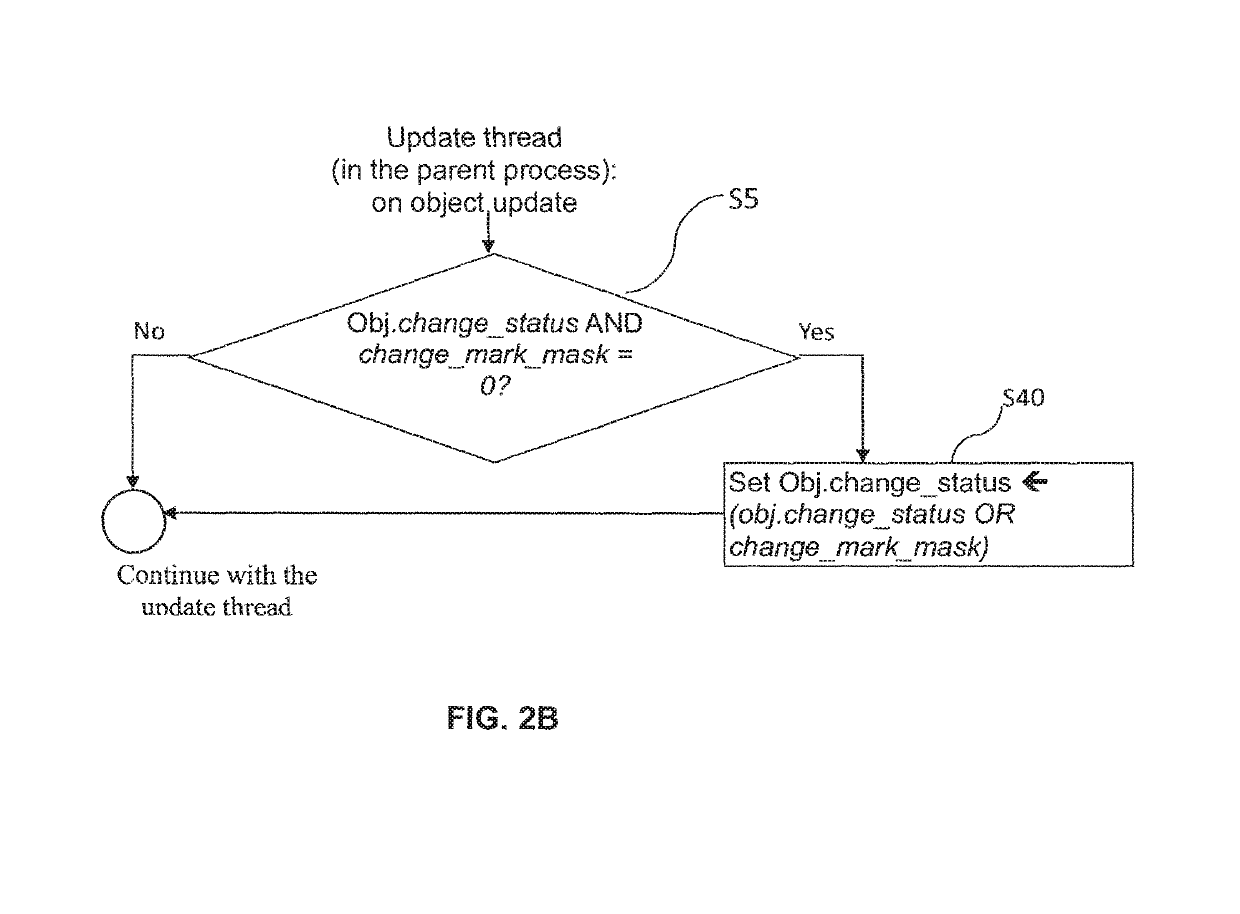Method and apparatus for tracking objects in a first memory
a technology of object tracking and first memory, applied in the direction of fault response, multi-programming arrangement, instruments, etc., can solve the problems of high latencies of bulk copy updates, unsuitable high-rate updates, and inapplicability to some applications, so as to avoid unnecessary copying of status variables
- Summary
- Abstract
- Description
- Claims
- Application Information
AI Technical Summary
Benefits of technology
Problems solved by technology
Method used
Image
Examples
Embodiment Construction
[0044]FIG. 1 provides an illustration of a checkpoint method, where a plurality of four objects 31, 32, 33 and 34 are tracked over four time intervals 11, 12, 13. The first time interval 11 precedes the first checkpoint 21. The second and third time intervals 12, 13 are defined as the intervals between first, second and third checkpoint 21, 22, 23. The fourth time interval 14 comes after the third checkpoint 24. The first and fourth objects 31, 34 are changed (indicated with reference numbers 41, 42) in the first interval 11. The fourth object is changed 43 again in the second interval 12. In the third interval 13, the second and third object 32, 33 are changed 44, 45.
[0045]In the first time interval 11 (that ends at the time of the first checkpoint 21), the change sets consist of the first and fourth object 31, 34, i.e., the objects that were modified before the first checkpoint 21. At the time of the first checkpoint, i.e., when the second time interval is started the objects are ...
PUM
 Login to View More
Login to View More Abstract
Description
Claims
Application Information
 Login to View More
Login to View More - R&D
- Intellectual Property
- Life Sciences
- Materials
- Tech Scout
- Unparalleled Data Quality
- Higher Quality Content
- 60% Fewer Hallucinations
Browse by: Latest US Patents, China's latest patents, Technical Efficacy Thesaurus, Application Domain, Technology Topic, Popular Technical Reports.
© 2025 PatSnap. All rights reserved.Legal|Privacy policy|Modern Slavery Act Transparency Statement|Sitemap|About US| Contact US: help@patsnap.com



